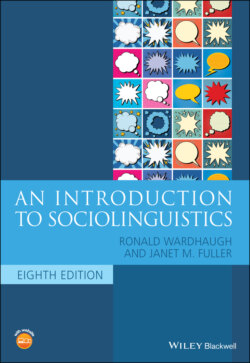Читать книгу An Introduction to Sociolinguistics - Ronald Wardhaugh, Janet M. Fuller - Страница 37
What is a Language?
ОглавлениеWhat do we mean when we refer to a language or, even more important, the idea of mixing languages? As we will discuss further in chapters 8 and 9, recent research has coined many new terms to describe what has traditionally been called multilingualism – ‘(trans)languaging,’ ‘metrolingualism,’ ‘heteroglossia.’ These terms reflect the idea that languages are ideological constructs; while we (usually) have names for different ways of speaking and can describe their features, in practice linguistic boundaries may be fluid. Not only do many people mix languages, but in some contexts, language users do not recognize the linguistic elements they use as part of different codes but simply as a normal way of speaking (Jaspers and Madsen 2019). Further, as we will discuss below, dialect continuums also challenge the perspective of languages as discrete, bounded entities.
The idea of languages as distinct codes is very deeply ingrained in society (and in linguistics!), and it is consequently often a very jarring concept to grasp. Throughout this text, we will continue to point out how ideologies about language lead us to think in ways which are not supported by empirical linguistic data. While we will continue to use the terms ‘language’ and ‘code,’ we recognize that these are words which refer to static systems, while linguistic communication is dynamic and flexible.
